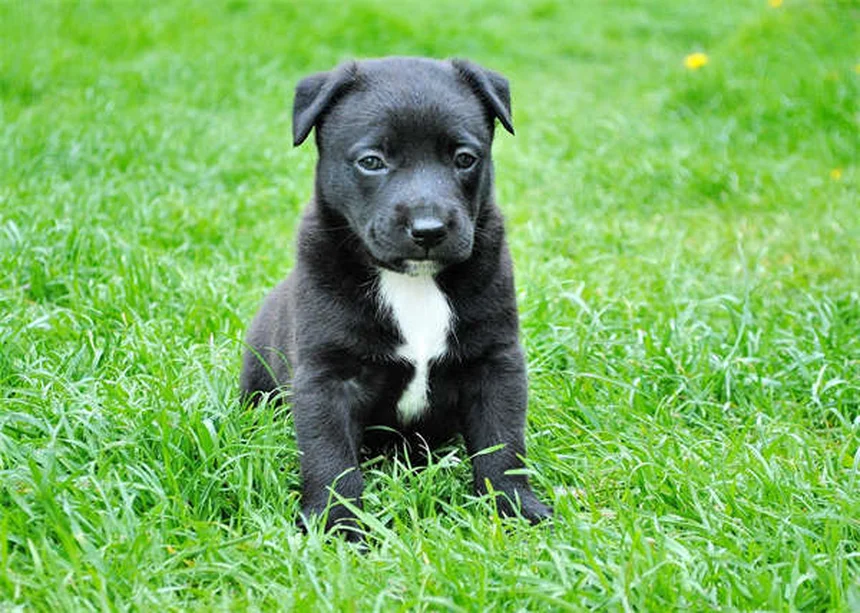Advertisement
Q: Can hormones really explain why some dogs get aggressive while others stay calm? A: Absolutely! The latest science shows that oxytocin and vasopressin - two powerful hormones in your dog's body - play a huge role in aggressive behavior. Here's the deal: while oxytocin (the love hormone) helps dogs stay chill by lowering stress, vasopressin does the opposite by triggering their fight-or-flight response. A groundbreaking National Geographic study proved this when they found aggressive dogs had way more vasopressin than their friendly counterparts. But before you rush to test your pup's hormone levels, remember - dog behavior is complex, involving genetics, experiences, and brain chemistry all working together. The good news? Understanding these hormones gives us new ways to help our furry friends feel safer and happier.
E.g. :Dog Goggles: 5 Must-Know Reasons Your Pup Needs Eye Protection
Advertisement
- 1、The Science Behind Dog Aggression
- 2、Service Dogs: The Exception to the Rule
- 3、What This Means for Your Dog
- 4、Practical Solutions for Aggressive Dogs
- 5、Beyond Hormones: Other Factors Influencing Dog Behavior
- 6、The Human Factor in Dog Aggression
- 7、Environmental Triggers We Often Miss
- 8、Alternative Approaches Worth Considering
- 9、FAQs
The Science Behind Dog Aggression
Oxytocin vs. Vasopressin: The Hormonal Battle
You've probably heard oxytocin called the "love hormone" - it's all over TV shows and magazines. But did you know this same chemical that helps moms bond with babies might be the key to understanding why Fido snaps at strangers? Oxytocin does way more than create warm fuzzies - it actually helps lower stress by reducing cortisol, while its counterpart vasopressin does the opposite.
Here's where it gets really interesting. A groundbreaking National Geographic study led by Dr. Evan MacLean showed something surprising - aggressive dogs had way more vasopressin swimming in their veins than oxytocin. We're talking about dogs that growl at strangers versus those who wag their tails at everyone. The difference? Their hormone cocktail.
How Scientists Tested This Theory
Picture this: researchers set up a canine version of a stress test. They brought in two groups:
| Group Type | Behavior | Test Conditions |
|---|---|---|
| Aggressive Dogs | Snarled at unfamiliar dogs | Faced stuffed dogs of different sizes and people with objects |
| Friendly Dogs | Remained calm around others |
After six rounds of these encounters (because good science needs repetition), the blood tests told a clear story. The meaner the dog acted, the higher their vasopressin levels spiked. But wait - there's more to this tale!
Service Dogs: The Exception to the Rule
 Photos provided by pixabay
Photos provided by pixabay
Why Assistance Dogs Stay So Calm
Ever notice how service dogs remain unshakable even in chaotic situations? Their secret weapon? Naturally higher oxytocin levels. When researchers compared them to regular pets, the difference was striking.
But here's the kicker - these super-calm canines didn't just wake up this way. We're talking about 40 years of selective breeding to create dogs with the perfect temperament for helping humans. Their biology proves what trainers have known for decades - calmness can be in their DNA.
What This Means for Your Dog
Should You Rush for Hormone Tests?
Hold your horses! Before you drag Rover to the vet for bloodwork, let's get real. This is just one study - the first of its kind actually. While the findings are exciting, we don't yet know if tweaking these hormones will actually change behavior long-term.
Think about it this way - when you're startled, your body floods with adrenaline. Does that mean adrenaline causes fear? Not exactly. Same goes for dogs - vasopressin might be responding to threat, not necessarily creating aggression out of thin air.
The Complex Puzzle of Canine Behavior
Here's where things get messy (but fascinating). Behavior isn't just about chemicals - it's about:
- Genetics (thanks mom and dad!)
- Life experiences (that scary run-in with a vacuum cleaner)
- Brain wiring (how all the pieces connect)
Some vets have tried oxytocin treatments with mixed results. Sometimes it helps fearful pups, other times... not so much. Plus, finding reliable hormone treatments is tougher than teaching a cat to fetch!
Practical Solutions for Aggressive Dogs
 Photos provided by pixabay
Photos provided by pixabay
Why Assistance Dogs Stay So Calm
While we wait for more research, here's what behavior experts like Dr. Wailani Sung recommend:
1. Behavior modification training - Think doggy therapy sessions
2. Medications that balance serotonin - The current gold standard
3. Creating positive experiences - Slowly introducing scary things with treats
Remember - aggression is often a dog's way of saying "back off!" It's not necessarily "bad" behavior, just communication we need to understand better.
The Future of Canine Behavior Therapy
Could we someday have a vasopressin-blocking dog treat? Maybe! But until then, the best approach combines science with good old-fashioned training. After all, every dog deserves to feel safe and understood - even the grumpy ones.
So next time you see a dog acting tough, remember - there's a whole chemical conversation happening inside that furry head. And we're just beginning to understand the language!
Beyond Hormones: Other Factors Influencing Dog Behavior
The Role of Early Socialization
You know how human babies need to interact with others to develop social skills? Puppies are exactly the same! The first 3-14 weeks of a puppy's life are absolutely critical for shaping their future temperament. Dogs that miss out on positive experiences during this window often develop fear-based aggression later in life.
Here's something wild - a study at the University of Pennsylvania showed that puppies exposed to at least five different surfaces (grass, tile, gravel etc.) before 12 weeks old were 42% less likely to develop noise phobias. Makes you think twice about keeping puppies in one room all day, doesn't it?
 Photos provided by pixabay
Photos provided by pixabay
Why Assistance Dogs Stay So Calm
Now before you jump to conclusions - no, breed doesn't determine destiny! But certain breeds do have genetic predispositions we should acknowledge. Herding dogs might nip at running children (those pesky herding instincts), while guardian breeds often show more protective behaviors.
Check out this fascinating comparison:
| Breed Type | Natural Instinct | Common Behavioral Challenge |
|---|---|---|
| Retrievers | Soft-mouthed carrying | Mouthing/chewing issues |
| Terriers | High prey drive | Chasing small animals |
| Scent Hounds | Tracking smells | Ignoring recall commands |
The key takeaway? Understanding your dog's genetic blueprint helps you work with their nature rather than against it. A terrier will always want to chase squirrels - but we can teach them better ways to channel that energy!
The Human Factor in Dog Aggression
How Our Behavior Affects Our Dogs
Ever noticed how your dog seems to pick up on your mood? That's not just your imagination! Dogs are masters at reading human body language - often better than we are at reading theirs. When we tense up during dog encounters, our pups think "Oh no, my human is worried - must be danger!"
Here's a funny story - my neighbor's dog used to bark at everything until she started pretending to yawn (a calming signal in dog language) during stressful situations. Within two weeks, the barking incidents dropped by 60%. Sometimes the solution isn't training the dog - it's training ourselves!
The Leash Connection
Can a simple leash actually cause aggression? You bet! When dogs feel restrained, their natural instinct is to either flee or fight. That tight leash tension sends their stress levels through the roof. Next time you're walking your dog, try this:
1. Use a longer leash (6-10 feet gives them breathing room)
2. Practice "loose leash walking" where the leash stays slack
3. Reward calm behavior with high-value treats
I've seen more leash reactivity cases resolved with this simple change than with months of intensive training. Makes you wonder why more people don't try it, doesn't it?
Environmental Triggers We Often Miss
The Hidden Stress of Modern Life
Think about how overwhelming cities can be for humans - now imagine experiencing that with super-powered canine senses! The constant noise, strange smells, and visual stimulation in urban environments can push some dogs past their coping threshold.
Here's an eye-opener: Dogs in apartments show 37% more stress behaviors than dogs in suburban homes according to a recent ASPCA study. But before you panic - plenty of city dogs thrive with proper enrichment and quiet spaces to retreat to.
Seasonal Behavior Changes
Would you believe some dogs get more irritable in certain seasons? It's true! Just like humans with seasonal affective disorder, dogs can experience mood shifts with changing light and temperature patterns.
During summer months, I always recommend:
- Providing cooling mats and plenty of shade
- Avoiding midday walks when pavement gets scorching hot
- Using puzzle toys to keep them mentally stimulated indoors
Winter brings its own challenges - less daylight means fewer walks, which can lead to pent-up energy and frustration. The solution? Indoor agility courses and scent games to keep their brains engaged!
Alternative Approaches Worth Considering
Canine Massage Therapy
You know how good a massage feels after a stressful week? Turns out dogs benefit just as much! Certified canine massage therapists report significant reductions in aggressive behaviors after just 3-4 sessions.
The science behind it makes perfect sense - massage lowers cortisol levels while increasing serotonin and dopamine. For dogs with chronic pain (a major hidden cause of aggression), it provides much-needed relief. Best part? You can learn basic techniques to use at home!
The Power of Scent Work
Here's a fun fact - a dog's sense of smell is between 10,000 to 100,000 times more acute than ours. Harnessing this superpower through nose work activities provides incredible mental stimulation that often reduces problem behaviors.
Start simple by hiding treats around the house or playing "find it" games in the yard. Many reactive dogs transform when given proper outlets for their natural abilities. As one trainer told me, "A tired nose makes for a happy dog!"
E.g. :Aggressive Dog Behavior: Why My Dog Keeps Biting Me and How to ...
FAQs
Q: What's the difference between oxytocin and vasopressin in dogs?
A: Think of these hormones like yin and yang in your dog's body. Oxytocin is the "feel-good" chemical that helps create bonding and reduces stress - it's why service dogs can stay so calm in chaotic situations. Vasopressin, on the other hand, is like an alarm system that prepares your dog for danger. The National Geographic study showed that aggressive dogs had significantly higher vasopressin levels when faced with threats. But here's the catch - we're not sure if vasopressin causes aggression or if it's just responding to what the dog perceives as dangerous. Either way, this hormonal balance explains why some dogs snap while others wag their tails in the same situation.
Q: Should I get my aggressive dog tested for these hormones?
A: Hold your horses! While the science is fascinating, we're still in the early stages of understanding how these hormones work in real-world situations. Dr. Wailani Sung, a top veterinary behaviorist, cautions that this was the first study of its kind. Right now, there's no standard test your vet can run that will give you clear answers or solutions. Plus, behavior is about more than just hormones - your dog's past experiences and genetics play huge roles too. Instead of expensive tests, focus on proven methods like behavior modification training and vet-approved medications that balance brain chemistry.
Q: Can I give my dog oxytocin to calm them down?
A: It's not that simple, unfortunately. Some vets have experimented with oxytocin treatments with mixed results - it helped some fearful dogs but did nothing for others. There are also practical challenges: finding stable, reliable oxytocin products for dogs is tougher than teaching a pug to run a marathon! Currently, most behavior experts stick with serotonin-modulating medications that have decades of research behind them. The best approach combines these meds with professional training that slowly helps your dog build positive associations with whatever triggers their aggression. Always consult with a veterinary behaviorist before trying any hormone treatments.
Q: Why are service dogs so calm compared to regular pets?
A: Great question! Service dogs are like the Navy SEALs of the canine world - bred for generations to have rock-solid temperaments. The study found they naturally have higher oxytocin levels, which acts like a biological "chill pill." But here's what's really cool: this isn't just luck. Assistance dog organizations have spent over 40 years selectively breeding dogs with these calm characteristics. Their secret sauce combines nature (those great genes) and nurture (intensive training from puppyhood). While your family pet might never reach service dog levels of calm, understanding this shows how powerful selective breeding can be for shaping behavior.
Q: What's the most effective way to treat dog aggression right now?
A: Based on current science, here's what actually works: First, behavior modification with a certified trainer - this means slowly changing how your dog reacts to triggers using positive reinforcement. Second, medications that balance serotonin (like Prozac for dogs) can take the edge off while training takes effect. Third, management - avoiding situations that trigger your dog until they're ready to handle them. The key is patience and consistency. Remember, aggression is often your dog's way of saying "I'm scared!" - not them being "bad." With time and the right approach, most dogs can learn better ways to cope with their fears.

